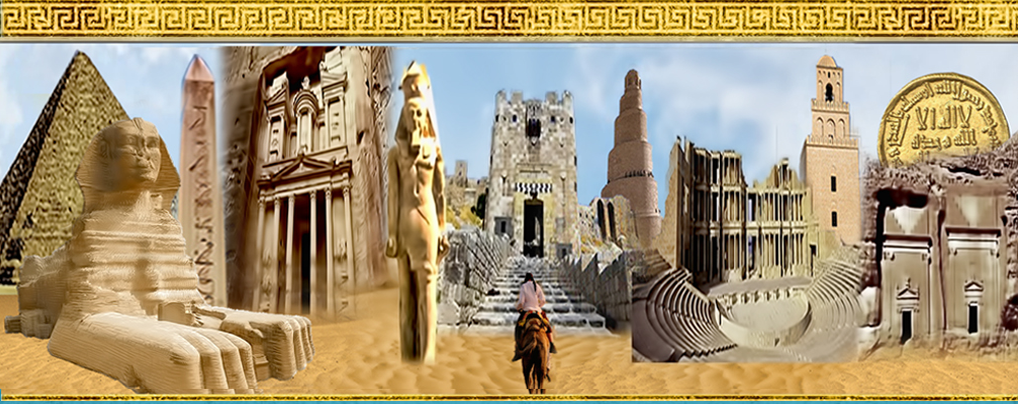Journal of the General Union of Arab Archaeologists

Abstract
بعض الملاحظات عن مكان الاعدام (xbt) في مصر القديمة [AR]
فى هذه المقالة ، تحاول الباحثة إلقاء الضوء على أحد أماكن العقاب في مصر القديمة ، ألا وهو مكان الإعدام الذى يسمى Xbt . ومن خلال الدراسة، نلاحظ أنه وعلي الرغم من تعدد أماكن العقاب وتنوعها فى مصر القديمة ، إلا أن التفاصيل قليلة فى وصف هذه الأماكن ، ولم ينتشر تصويرها سواء فى المناظر أو فى كتب العالم الآخر. وقد كان الإعدام بقطع الرأس موجود فى التصاوير منذ العصور المبكرة، وكان عقابا لأعداء الملك كما سجل على بعض الصلايات من العصور المبكرة وبصفة خاصة صلاية الملك نعرمر، ولكن عقوبة الإعدام كنتيجة لجريمة ارتكبها شخص ما، لم تثبت بصورة واضحة. والإعدام يعني فناء الشخص نهائيا ، والنجاة من العقاب بالإعدام كان غاية الشخص دائما حتى ولو كان مسيئا. ومكان الإعدام xbt لم يصور بشكل صريح وهو يعبر عن أداة الإعدام نفسها وليس المكان . ويبدو من خلال الدراسة انه يعبر عن مكان يتم فيه الإعدام بواسطة الأداة xbt . وقد ظهرت فى كتاب الموتي بردية آني ، الفصل 50 . حيث يصورالمتوفى مارا بسلام موجها ظهره لأاداة الإعدام ، التى يتم تمثيلها بقاعدة تشبه التل ، يخرج من أطرافها عمودان ، ومن فوقها سكينا كبيرا ، ينزل للأسفل لقطع الرأس ، وهناك قطرات من الدماء تسقط منها. ومن خلال هذا البحث ، نستطيع أن نلقي الضوء على بعض المحاولات التى من الممكن أن تضمن حتى للمذنب أن ينجو من مصير الفناء بنجاح.
[EN] In this paper, I highlight one of the punishment places in ancient Egypt [xbt], i.e., the place of execution‚ which was mentioned early in the Pyramid Texts. This place is considered the oldest known punishment place in ancient Egypt. Many punishment places for the wrongdoers were mentioned in texts‚ but were not precisely described or clearly represented. It is well known that in the early period‚ decapitation existed. It was a traditional performance against the enemies of the king. It could be traced as early as king Narmer, as recorded on his palette exhibited in the Egyptian Museum in Cairo. However, beheading as a consequence of a crime was not attested definitively. The enemies of the king were represented on the palette with their heads cut off, and each enemy had his head between his legs. Keeping the heads of the enemies with the bodies was an exceptional habit in ancient Egyptian representations. That notice made the author wonder why the ancient Egyptians were keen to preserve the heads of the guilty, although they were considered enemies and deserved total extinction. Thus, the author thought of the execution place [xbt]] in order to know more about this place and determine the destiny of the guilty‚ whether a total extinction or another chance to survive. The execution place was known from the Old Kingdom and continued through the Greco-Roman Period. It was in the shape of a shrine upon which a huge knife was descended downwards to cut off heads and two upright posts. The only representation of the place of execution appeared in Spell 50 of the Book of the Dead. The act of cutting off heads‚ the ancient Egyptians never expressed clearly in art‚ but the heads were cut off in many scenes. Even when the tool of execution was represented as in the Book of the Dead‚ only the tool, not the act, was shown. Moreover, the deceased was given his back to it‚ as if he meant only to warn the people from falling into this tortured place. In this study‚ the author gives some remarks on the place of execution‚ and how the deceased tried to avoid entering such place‚ as he prayed to pass safely by the execution place. The author noticed that the ancient Egyptians ignored the details of the punishment places. They only showed the beheaded bodies of the enemies or the sinners in different scenes in life and the books of the afterlife. They let us wonder‚ if there were a total extinction by beheading the wrongdoers or if there were some ways to escape that ugly fate. In this paper, the author searched for the ways that the ancient Egyptians used to avoid extinction and found out that (1) by some religious texts from different periods‚ (2) by some sacrifice, especially an animal to save the person‚ and (3) by the help of some deities (e.g., Thoth‚ Shesemu‚ Sekhmet‚ Mehit‚ Matyt‚ and Horus-Merty) he might survive and have another chance to escape that ugly fate.
Recommended Citation
El Nadi, Mona Abou El Maati
(2023)
"SOME REMARKS ON THE EXECUTION PLACE xbt IN ANCIENT EGYPT,"
Journal of the General Union of Arab Archaeologists: Vol. 8:
Iss.
1, Article 3.
Available at:
https://digitalcommons.aaru.edu.jo/jguaa/vol8/iss1/3
Included in
Historic Preservation and Conservation Commons, History Commons, History of Art, Architecture, and Archaeology Commons

